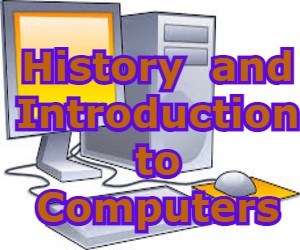After going through History and Introduction To Computers you will be in a position to
- Understand the history of computer
- Define a computer
- Identify characteristics of computer
- Know the origin and evolution of computer
- Identify capability of computer in terms of speed and accuracy
- Distinguish computer from human beings and calculator
- Identify the role of computer
- Appreciate the evolution of computer through five generations
What is a Computer?
Computer is an electronic device capable of solving problems and manipulating data. It accepts data, processes the data by doing some mathematical and logical operations and gives us the desired output.
Therefore, we may define computer as a device that transforms data. Computer can be defined in terms of its functions. It can:
- Accept data
- Store data
- Process data as desired, and
- Retrieve the stored data as and when required and
- Print the result in desired format.
Data-.Numbers, characters, symbols, images etc., which can be processed by a computer. Information– is interpreted data
Characteristics of a computer
- Accuracy
- Diligence-Free from tiredness
- Versatility-Ability to perform different types of work
- Power of Remembering
- No IQ
- Speed
- No Feeling
- Storage
History of Computers
The first counting device was used by the primitive people. They used sticks, stones and bones as counting tools. As human mind and technology improved with time more computing devices were developed. History of computer could be traced back to the effort of man to count large numbers. This process of counting of large numbers generated various systems of numeration like Babylonian system of numeration, Greek system of numeration, Roman system of numeration and Indian system of numeration. Out of these the Indian system of numeration has been accepted universally.
Some of the popular computing devices starting with the first to recent ones are described below;
Abacus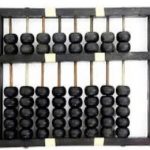 The history of computer begins with the birth of abacus which is believed to be the first computer. It is said that Chinese invented Abacus around 4,000 years ago.
The history of computer begins with the birth of abacus which is believed to be the first computer. It is said that Chinese invented Abacus around 4,000 years ago.
It was a wooden rack which has metal rods with beads mounted on them. The beads were moved by the abacus operator according to some rules to perform arithmetic calculations. Abacus is still used in some countries like China, Russia and Japan.
Napier’s Bones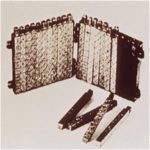 It was a manually-operated calculating device which was invented by John Napier (1550-1617) of Merchiston. In this calculating tool, he used 9 different ivory strips or bones marked with numbers to multiply and divide. So, the tool became known as “Napier’s Bones. It was also the first machine to use the decimal point.
It was a manually-operated calculating device which was invented by John Napier (1550-1617) of Merchiston. In this calculating tool, he used 9 different ivory strips or bones marked with numbers to multiply and divide. So, the tool became known as “Napier’s Bones. It was also the first machine to use the decimal point.
Pascaline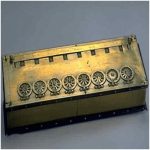 Pascaline is also known as Arithmetic Machine or Adding Machine. It was invented between 1642 and 1644 by a French mathematician-philosopher Biaise Pascal. It is believed that it was the first mechanical and automatic calculator.
Pascaline is also known as Arithmetic Machine or Adding Machine. It was invented between 1642 and 1644 by a French mathematician-philosopher Biaise Pascal. It is believed that it was the first mechanical and automatic calculator.
Stepped Reckoner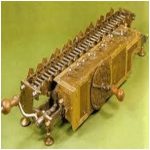 It was developed by a German mathematician-philosopher Gottfried Wilhelm Leibnitz in 1673. He improved Pascal’s invention to develop this machine. It was a digital mechanical calculator which was called the stepped reckoner as instead of gears it was made of fluted drums.
It was developed by a German mathematician-philosopher Gottfried Wilhelm Leibnitz in 1673. He improved Pascal’s invention to develop this machine. It was a digital mechanical calculator which was called the stepped reckoner as instead of gears it was made of fluted drums.
Difference Engine 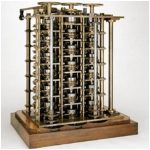 In the early 1820s, it was designed by Charles Babbage who is known as “Father of Modern Computer”. It was a mechanical computer which could perform simple calculations. It was a steam driven calculating machine designed to solve tables of numbers like logarithm tables.
In the early 1820s, it was designed by Charles Babbage who is known as “Father of Modern Computer”. It was a mechanical computer which could perform simple calculations. It was a steam driven calculating machine designed to solve tables of numbers like logarithm tables.
Analytical Engine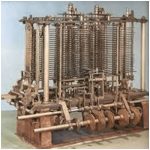 This calculating machine was also developed by Charles Babbage in 1830. It was a mechanical computer that used punch-cards as input. It was capable of solving any mathematical problem and storing information as a permanent memory.
This calculating machine was also developed by Charles Babbage in 1830. It was a mechanical computer that used punch-cards as input. It was capable of solving any mathematical problem and storing information as a permanent memory.
Generations of Computers
A generation of computers refers to the specific improvements in computer technology with time. In 1946, electronic pathways called circuits were developed to perform the counting. It replaced the gears and other mechanical parts used for counting in previous computing machines.
In each new generation, the circuits became smaller and more advanced than the previous generation circuits. The miniaturization helped increase the speed, memory and power of computers. There are five generations of computers which are described below;
First Generation Computers
The first generation (1946-1959) computers were slow, huge and expensive. In these computers, vacuum tubes were used as the basic components of CPU and memory. These computers were mainly depended on batch operating system and punch cards. Magnetic tape and paper tape were used as output and input devices in this generation;
Some of the popular first generation computers are;
- ENIAC ( Electronic Numerical Integrator and Computer)- The ENIAC was 30, 50 feet long, weighed 30 tons, contained 18,000 vacuum tubes, 70,000 registers 10,000 capacitors and required 150,000 watts of electricity.
- EDVAC ( Electronic Discrete Variable Automatic Computer) – The concept of storing data and instructions inside the computer was introduced here. This allowed much faster operation since the computer had rapid access to both data and instructions.
- EDSAC: It stands for Electronic Delay Storage Automatic Computer and was developed by M.V. Wilkes at Cambridge University in 1949.
- UNIVAC-1: Ecker and Mauchly produced it in 1951 by Universal Accounting Computer setup.
Second Generation Computers
The second generation (1959-1965) was the era of the transistor computers. These computers used transistors which were cheap, compact and consuming less power; it made transistor computers faster than the first generation computers.
In this generation, magnetic cores were used as the primary memory and magnetic disc and tapes were used as the secondary storage. Assembly language and programming languages like COBOL and FORTRAN, and Batch processing and multiprogramming operating systems were used in these computers.
Some of the popular second generation computers are;
- IBM 1620: Its size was smaller as compared to First Generation computers and mostly used for scientific purpose.
- IBM 1401: Its size was small to medium and used for business applications.
- CDC 3600: Its size was large and is used for scientific purposes.
Third Generation Computers
The third generation computers were introduced in 1964. They used Integrated Circuits (ICs). These ICs are popularly known as Chips. A single IC has many transistors, registers and capacitors built on a single thin slice of silicon. So it is quite obvious that the size of the computer got further reduced. Some of the computers developed during this period were IBM-360, ICL-1900, IBM-370, and VAX-750. Higher level language such as BASIC (Beginners All purpose Symbolic Instruction Code) was developed during this period. Computers of this generation were small in size, low cost, large memory and processing speed is very high.
Fourth Generation Computers
The present day computers that you see today are the fourth generation computers that started around 1975. It uses large scale Integrated Circuits (LSIC) built on a single silicon chip called microprocessors. Due to the development of microprocessor it is possible to place computer’s central processing unit (CPU) on single chip. These computers are called microcomputers. Later very large scale Integrated Circuits (VLSIC) replaced LSICs.
Fifth Generation Computers
The computers of 1990s are said to be Fifth Generation computers. The speed is extremely high in fifth generation computer. Apart from this it can perform parallel processing. The concept of Artificial intelligence has been introduced to allow the computer to take its own decision. It is still in a developmental stage.

